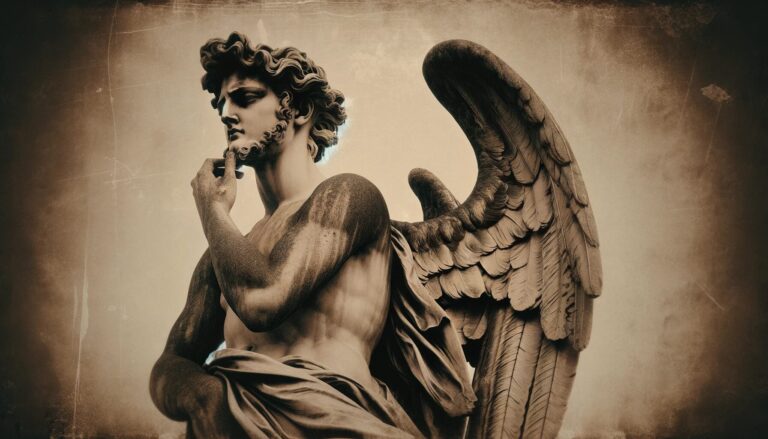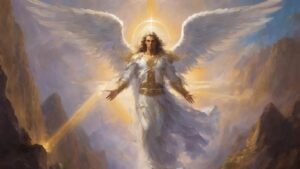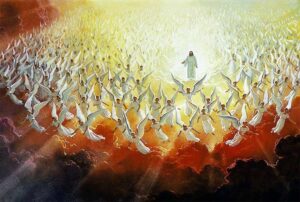Table of Contents
Mythical creatures have always captured the human imagination, and among the most enigmatic is Lucifer. This elusive being has intrigued storytellers and mystics for centuries, inspiring tales that explore the boundaries of good and evil.
Origins

Lucifer’s enigmatic origins remain veiled in ambiguity, shaped by various cultures across time. Ancient Rome, notably, intertwined Lucifer with the morning star, Venus, providing one of the earliest references. “Lucifer” finds its etymological roots in the Latin “lucifer,” signifying “light-bringer” or “morning star.”
Christian theology further enmeshes the concept of Lucifer, often equating him with Satan, the rebellious fallen angel. In this theological context, Lucifer symbolizes the pinnacle of evil and defiance against God.
Appearance
Lucifer’s appearance is as multifaceted as his origins. Depictions of this mythical creature vary widely across different cultures and eras. Certain commonalities persist in many representations.
In certain traditions, Lucifer emerges as a mesmerizingly beautiful angelic figure. Artists depict him with cascading golden locks, an ethereal aura, and an irresistibly captivating allure that ensnares onlookers.
Hypnotic Eyes: Lucifer’s eyes are frequently described as hypnotic and alluring. They have the power to ensnare and captivate individuals, making them susceptible to his charms and persuasions.
Wings: The presence of wings is a recurring motif in Lucifer’s appearance. However, the nature of these wings can vary. In some depictions, his wings are angelic and majestic, while in others, they resemble the wings of dragons or bats, emphasizing his dual nature as both an angel and a fallen being.
Sinister and Monstrous: Conversely, some interpretations of Lucifer paint him as a sinister and monstrous figure. In these depictions, his appearance is meant to evoke fear and dread. He may be portrayed with grotesque features, horns, and a menacing demeanor.
Shape-shifting Abilities: Lucifer’s shape-shifting abilities add to the complexity of his appearance. He can assume various forms, allowing him to deceive and seduce those who encounter him. This shape-shifting aspect contributes to his enigmatic and elusive nature.
Radiance and Darkness: The contrast between light and darkness is a central theme in Lucifer’s appearance. He is often associated with both the brilliance of the morning star and the shadowy depths of Hell, embodying the duality of good and evil.
Abilities
Lucifer’s abilities are equally diverse and have evolved over time, reflecting the ever-changing nature of the myths surrounding him. Most commonly attributed abilities to Lucifer:
- Light Manipulation: As the “light-bringer,” Lucifer possesses the power to control and manipulate light. He can create blinding flashes of brilliance or plunge the world into darkness at will.
- Shape-shifting: Lucifer can assume various forms, allowing him to deceive and seduce those who cross his path. This ability adds to his allure and danger.
- Immortality: Across many mythologies, Lucifer is often depicted as immortal or nearly so, making him an enduring and eternal force.
- Persuasion: Lucifer’s charm and eloquence enable him to sway the opinions and decisions of others. He is often portrayed as a master manipulator, capable of leading both angels and humans astray with his words.
- Fire Control: Some myths attribute control over fire to Lucifer, symbolizing both his connection to the morning star and his destructive potential.
Myths and Stories about Lucifer
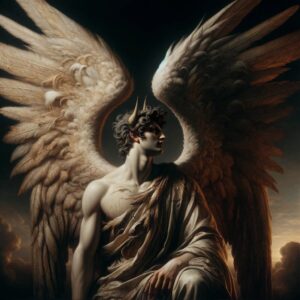
Lucifer’s presence in mythology is not confined to one particular culture or time period. Instead, stories and myths about him have proliferated, creating a rich tapestry of narratives that explore his character from various angles.
The Fall from Grace
In Christian theology, one of the most enduring myths centers around Lucifer and his rebellion against God, which ultimately led to his expulsion from Heaven. Lucifer, once an angel of radiant light, became prideful and coveted God’s divine throne. This ambitious desire marked the inception of a cosmic conflict of unparalleled proportions.
The narrative unfolds with Lucifer rallying a faction of like-minded angels in opposition to God’s supreme authority. This uprising initiated a celestial war, a cataclysmic battle between the forces of Heaven and those led by Lucifer. Heaven trembled with the clash of angelic armies, and the very fabric of the universe seemed to quiver.
As the war raged on, it became evident that Lucifer’s rebellion was a perilous quest. The overwhelming might of God’s loyal angels eventually prevailed, and Lucifer’s faction was defeated. The consequences of his defiance were swift and severe.
In the aftermath of this celestial struggle, God cast Lucifer and his rebellious followers out of Heaven. They were banished to the depths of Hell, a realm of eternal suffering and darkness. Lucifer, the once-glorious angel of light, was now forever condemned to exist in a state of profound torment, transformed into the embodiment of evil and rebellion.
This myth serves as a profound cautionary tale, emphasizing the dangers of pride and disobedience in the face of divine authority. It underscores the eternal consequences that may await those who dare to challenge the supremacy of God. Lucifer’s fall from grace is a story that continues to resonate through the annals of mythology, reminding us of the enduring power and consequences of our choices and actions.
Milton’s “Paradise Lost”
John Milton’s epic poem “Paradise Lost” stands as a seminal work that delves deeply into the character of Lucifer. Within this literary masterpiece, Lucifer emerges as a complex and multifaceted figure. In Milton’s portrayal, Lucifer is not merely a one-dimensional embodiment of evil but rather a tragic figure driven by his own pride and ambition.
Throughout the poem, Lucifer’s character is marked by a profound sense of defiance. He rebels against God, challenging the divine authority and seeking to establish his own dominion. His motivation is rooted in his pride and an unyielding desire for power and independence.
Milton’s portrayal of Lucifer is remarkably humanizing. He crafts a character whose inner turmoil and conflicting emotions invite readers to empathize with this fallen angel. Despite his rebellion and defiance, Lucifer’s tragic fate evokes a sense of sympathy.
The character of Lucifer, as envisioned by Milton, embodies the classic literary archetype of the tragic hero. His downfall is not merely a consequence of malevolence but also of his own flawed human nature. As readers, we witness his descent from a position of exalted beauty and power to one of abject despair and eternal damnation.
In “Paradise Lost,” Lucifer’s character challenges our understanding of morality and the complexities of free will. Milton’s portrayal encourages readers to grapple with the consequences of pride and ambition, ultimately questioning the nature of good and evil.
Through his nuanced depiction of Lucifer, Milton creates a character whose inner turmoil and tragic journey continue to captivate readers, leaving us with enduring questions about the human condition and the pursuit of power and independence.
Faustian Bargains
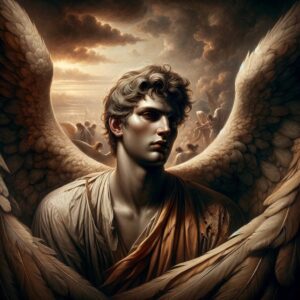
The legend of Faust, a scholar who strikes a pact with the devil in exchange for knowledge and power, intertwines closely with the archetype of Lucifer. In these timeless narratives, Lucifer frequently assumes the guise of Mephistopheles, the cunning demon who entices Faust into temptation.
At the core of these tales lies a profound exploration of humanity’s deepest desires and the moral quandaries they provoke. Faust’s yearning for unparalleled knowledge and earthly pleasures leads him to willingly trade his immortal soul to Lucifer, portrayed as Mephistopheles, the sinister facilitator of Faust’s desires.
The Faustian legend serves as a compelling examination of the universal theme of temptation. Faust’s initial pursuit of knowledge and power, tinged with hubris, mirrors Lucifer’s own fall from grace. Both characters are driven by an insatiable desire to transcend their limitations, ultimately leading to their moral downfall.
The stories offer a moral commentary on the consequences of making deals with the devil. Faust’s tragic fate serves as a cautionary tale, highlighting the perils of succumbing to temptation and the inevitable price one must pay for transgressing moral boundaries. Lucifer, as Mephistopheles, embodies the allure of the forbidden, luring Faust into a web of moral compromise.
Through these narratives, readers are compelled to grapple with profound questions about the human condition, the pursuit of power and knowledge, and the ethical dilemmas that arise when one strikes a pact with the devil. Faust’s tragic journey, guided by the enigmatic Lucifer, continues to resonate as a timeless exploration of the complexities of human desire and the consequences of tempting fate.
Modern Interpretations
In contemporary literature and popular culture, Lucifer has experienced a resurgence in popularity. The television series “Lucifer” reimagines him as a charming and charismatic character who runs a nightclub in Los Angeles. This portrayal humanizes Lucifer further, focusing on his struggle with his own identity and morality.
Conclusion
Lucifer, the mythical creature and archetype, continues to captivate our imaginations with his complex origins, ever-changing appearance, and multifaceted abilities. His presence in mythology transcends time and culture, offering a lens through which we explore themes of rebellion, temptation, and the human condition.
Whether seen as a symbol of evil, a tragic figure, or a charismatic antihero, Lucifer’s enduring appeal lies in his ability to challenge our understanding of good and evil, inviting us to ponder the enigmatic nature of our own desires and aspirations.
FAQ
What are Lucifer's origins?
Lucifer's origins are rooted in various mythologies, including Roman, Christian, and literary traditions.
How is Lucifer typically depicted?
Lucifer's appearance varies but often includes elements of angelic beauty, mesmerizing eyes, and sometimes sinister features.
Is Lucifer the same as Satan?
In some contexts, Lucifer is equated with Satan, but they are distinct figures in various mythologies.
What are Lucifer's abilities?
Lucifer is attributed with powers like light manipulation, shape-shifting, and persuasion, depending on the myth.
What is the significance of Lucifer in literature?
Lucifer appears in various literary works, notably in John Milton's "Paradise Lost," as a complex and tragic character.
What themes are explored in Lucifer myths?
Lucifer myths often explore themes of rebellion, temptation, morality, and the consequences of defying divine authority.
How has modern pop culture portrayed Lucifer?
In modern culture, Lucifer is sometimes portrayed as a charismatic, morally ambiguous character, as seen in the TV series "Lucifer."
